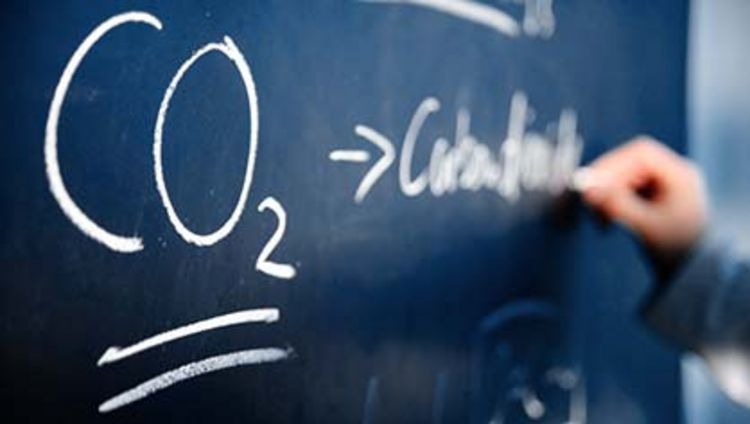Global CO2 emissions hit a new high in 2013. One solution for lowering these emissions is emissions transfers. Oldenburg University researcher Marco Springmann examines how these transfers can be integrated into international climate policy.
Global carbon emissions are rising and accelerating climatic changes. Although developing countries are responsible for much of the current increase in emissions, the products they produce are, to a large extent, exported and consumed in industrialized countries. The indirect emissions transfers through trade between developing and industrialized countries have increased fourfold in the last two decades: from 0.4 gigatonnes CO2 in 1990 to 1.6 gigatonnes in 2008. How can industrialized countries shoulder the responsibility for those developments, and how would a responsible climate policy look like? Those are the questions that Marco Springmann, environmental economist at the University of Oldenburg, Germany, is investigating in his study “Integrating emissions transfers into policy-making“, which now appeared in the renowned science journal “Nature Climate Change”. Springmann proposes that industrialized countries offset their consumption-based emissions transfers by financing clean-development investments in developing countries. “This could strengthen current climate policies and lead to a fairer burden-sharing of emissions,” according to Springmann.
Global carbon emissions have reached record highs in 2013. Although industrialized countries have stabilized their territorial emissions, the emissions driven by their consumption continue to increase. International trade plays a central part in this process. It allows industrialized countries to import energy and emissions-intensive goods from developing countries – in particular from China and other emerging economies – without being held responsible for the emissions generated in the process.
It is widely recognized that the emissions transfers from developing countries to developed ones undermine the ability of national emissions-reduction targets to decrease global emissions, but concrete policy proposals that would address this issue are still lacking. This is mainly because it is not clear how to best integrate emissions transfers into policy and because policy makers fear that the economic cost associated with such integration could be significant.
In his study, Marco Springmann uses a global energy–economic model to provide the first consistent analysis of the environmental and economic effects of three different policy approaches that integrate emissions transfers into the current climate policy framework. The policies include adjusting domestic emissions-reduction targets for emissions transfers, using import tariffs and export subsidies to adjust the price of traded goods according to their CO2 content, and offsetting emissions transfers by financing emissions reductions and clean development in the exporting developing regions.
The author finds that offsetting emissions transfers through clean-development investments is the most promising option from an environmental and economic perspective. It leads to the greatest emissions reductions among the policy options, and it is up to a third more cost-effective in reducing emissions than the other options. The study shows that industrialized countries could offset the portion of energy-intensive emissions transfers from developing countries by investing about USD 3 billion in clean-development financing. This investment corresponds to less than 0.01% of the gross domestic product (GDP) of industrialized countries. Offsetting the emissions transfers from all traded goods would require about USD 50 billion, or 0.1% of industrialized countries’ GDP.
The other two policy options are either more expensive or have little impact on reducing global emissions. The study shows that tightening emissions-reduction targets in industrialized countries without allowing for offsets could lead to great economic losses – not only in industrialized countries, but also in developing ones. The mechanism behind this is that tighter reduction targets increase domestic prices and reduce consumption in industrialized countries. As a result, developing countries cannot export as much as before to those countries, and they have to pay higher prices for their own imports. Consequently, developing countries and industrialized ones both loose.
Adjusting the price of traded goods by carbon-related import tariffs and export subsidies could be economically more appealing for industrialized countries, but those national benefits would come at a great global cost. The study shows that developing countries would likely suffer a disproportionate economic burden due to the new tariffs, while the global emissions trajectory and, with it, climate change would remain unaddressed.
Springmann notes: “An ideal policy response against trade-induced emissions leakage would be to adopt a global climate agreement with broad coverage. However, such an agreement might not eventuate for decades. Connecting emissions transfers to international offset responsibilities would strengthen current climate policies, send a positive signal to the international climate negotiations, and lead to real and affordable emissions reductions in the next years."
Article: Springmann, M. (2014): Integrating emissions transfers into policy-making. Nature Climate Change [DOI: 10.1038/nclimate2102] (Advance Online Publication)
Weblink to article: dx.doi.org/10.1038/nclimate2102

